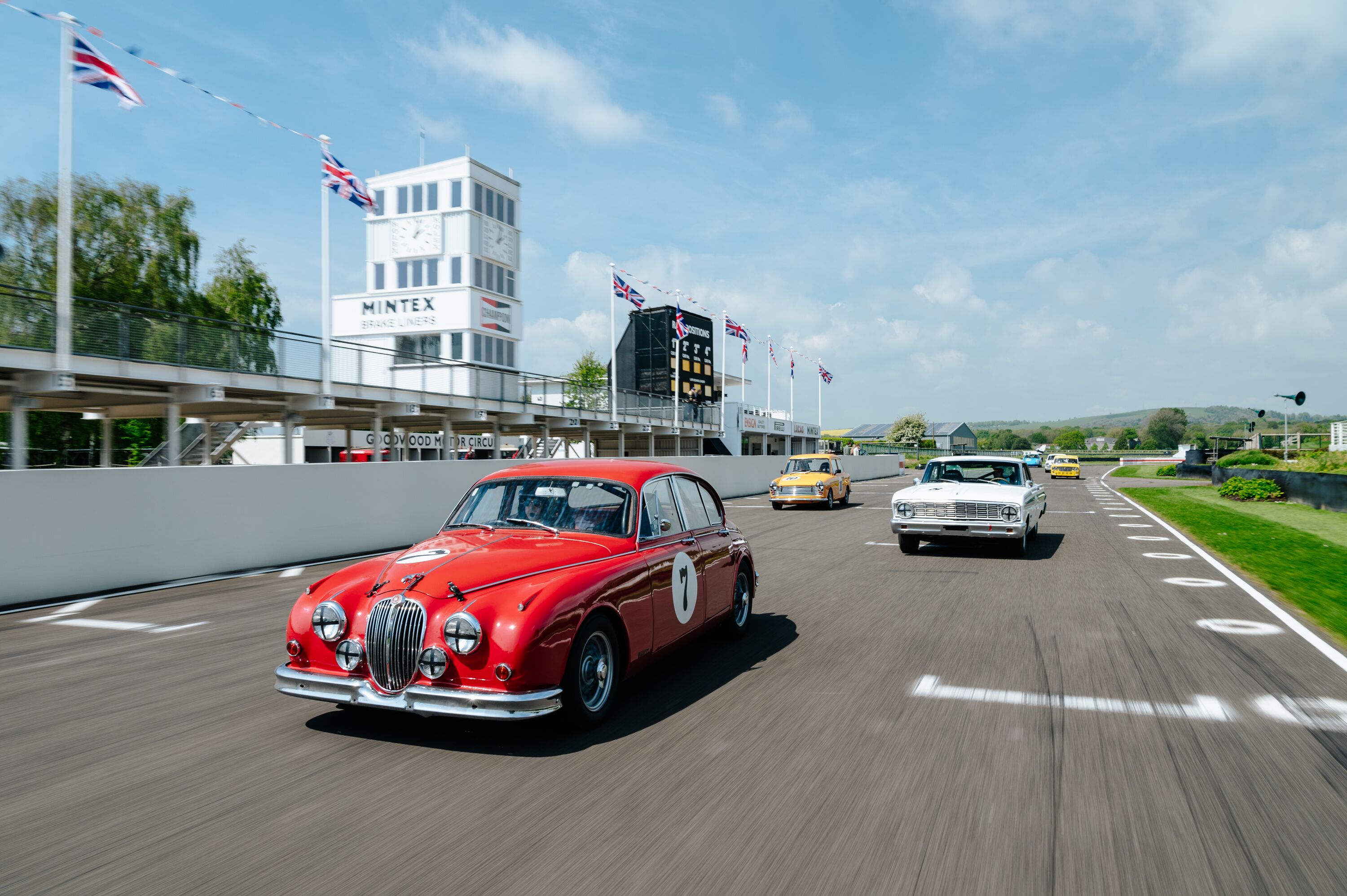Thank Frankel it’s Friday: Patrick Depailler was the antithesis of the modern F1 driver
 Andrew Frankel
Andrew Frankel
This column, fairly obviously, is published on a Friday. Which means that being a freelance journalist who therefore never files anything until the last possible second, these words are being written early on Thursday morning, which as I write rather than as you read, is August 1st.

Which is not a good day for fans of great racing drivers. Fifty years ago today Gerhard Mitter lost his life in practice for the German Grand Prix. Hillclimb fans will remember him as a giant of that once huge arm of the sport, winning back-to-back titles for Porsche in 1967 and 1968. Always at his best on tight demanding courses, he also won the 1969 Targa Florio in the last year of his life.
It was ten years earlier to the day that Ivor ‘the driver’ Bueb (above, right with Mike Hawthron at Le Mans in 1955) finally succumbed to internal injuries suffered six days previously when he was thrown out of his Cooper in a F2 race at Clermont-Ferrand. I’ve always thought Bueb a woefully under-rated driver. No Moss for sure, but a double Le Mans winner for Jaguar in 1955 and 1957, winner of the 1956 Reims 12 Hours, and a driver who was at his best in the worst conditions, in pouring rain in the middle of the night. Suggestions that he was somewhat living on his wits and consumed a not small amount of brandy before his last race saddens me: if true for obvious reasons, if not because they impugn the reputation of a fine driver.

Monaco, 1959. Jean Behra in his Ferrari Dino 246 leads Stirling Moss and Jack Brabham in their Cooper T51 Climax.
And on the same day that Bueb died, so did Jean Behra, instantly, when he drove his Porsche sportscar over the edge of the banking at the AVUS. Behra was and remains an enigma, one of a handful of drivers who on his day could really give Moss something to think about. Short and stocky he was sufficiently volatile to flatten the Ferrari team manager – aka his boss – with a single punch. Behra was capable of heroics in Gordinis until they broke (which was frequently) and consistently good results for Maserati – of the six championship Grands Prix he finished in 1956 he was on the podium of five. Some, including esteemed racing journalist Nigel Roebuck, say he was their favourite driver of all.

Patrick Depailler at the Monaco Grand Prix, 1980.
But even now August 1st was not yet done, for in 1980 this dark date also claimed another Frenchman, from a different time, but absolutely in the same league as Behra. He was Patrick Depailler, and I was thinking of him at the weekend as modern F1 cars skittered and flailed their way around Hockenheim, where Depailler was killed in testing for the German Grand Prix.
I was always a massive Depailler fan, and then the wonders of the internet brought me the in-car footage of him driving a Tyrrell around a flooded Montreal race track. If you’ve not seen it, go and look now because as examples of car control go, not to mention what F1 has lost in the last 40-odd years, there are few better.
Depailler was himself the antithesis of the modern F1 driver. He drank, he smoked, he spoke his mind. He was a huge fan of dangerous sports and was a keen skier, scuba diver and lover of overpowered motorcycles. Easily the biggest accident of his life until his last came when he flew a hang-glider into a mountain. For a while it looked like he might spend the rest of his days in a wheelchair and the racing community was keen to write off this two-time Grand Prix winner. They were wrong: he came back, better than ever and had the Alfa-Romeo been more reliable, would have scored many strong finishes.

Depailler driving the six-wheeled Tyrell P34 at Fuji, 1977.
But I remember him best in the six-wheeled Project 34 Tyrrell, for his approach to it summed up the character of the man to perfection. While team-mate Jody Scheckter was utterly dismissive of this highly experimental car, Depailler loved it and was instrumental in convincing Tyrrell that it should be raced. He scored five podiums in it too, as did Scheckter including victory at Anderstorp, so it couldn’t have been as rubbish as all that.
I once drove Depailler’s P34, after it had languished for decades in the Wheatcroft collection and, tyres aside, was exactly as it finished its last race in 1977. And I do mean exactly: engine, gearbox and chassis, wishbones and wings, wheels and wiring, seat, belts, switches and dials. It was a time capsule.

Argentina, 1978. Left to right: Ronnie Peterson, Mario Andretti, Patrick Depailler, James Hunt.
Its condition also meant I could only drive it very slowly, which mattered to me not at all. To sit in Patrick’s seat and drive what he drove unchanged, well for me it was quite an emotional moment. Hard to believe that this time next year he’ll have been gone fully 40 years.
Images courtesy of Motorsport Images.
Formula 1
Motorsport
Patrick Depailler
Gerhard Mitter
Ivor Bueb
Jean Behra
Tyrell
P34
Thank Frankel it's Friday






